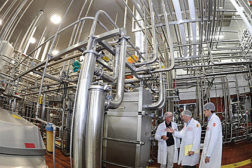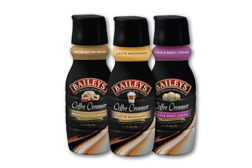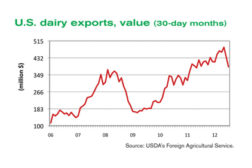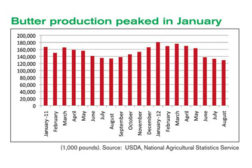Home » dairy processors
Articles Tagged with ''dairy processors ''
Rhino Foods is rolling in cookie dough
Rhino Foods measures everything it does. Employees work to a goal and are rewarded when they meet the targets. Management’s reward is a smooth-running organization that fulfills customers’ needs.
February 15, 2013
A look inside HP Hood's Sacramento plant
HP Hood fills 600 bottles a minute on its new aseptic line in its Sacramento, Calif., plant. The company processes dairy and nondairy beverages in aseptic and extended shelf life packages.
January 18, 2013
While many processors specialize, HP Hood does it all
While many processors specialize, HP Hood does it all: milk, ice cream, cheese, yogurt, other cultured foods and nondairy beverages.
January 15, 2013
Tighter dairy supplies forecast for 2013
Drought in the United States, less favorable conditions in Europe, an uncertain El Niño and a decrease in New Zealand pay prices have increased supply challenges in the year ahead.
November 19, 2012
Ingredients help consumers play with their food
One trend is interactive foods, as when users stir inclusions into yogurts or swirl colors into new combinations. Other trends (like clean labels) can have a domino effect on formulations. Eliminating sugar, for example, has a direct bearing on texture.
November 18, 2012
Butter is ready for its close-up
Good old high-fat, high-calorie butter is starring on restaurant menus and at home. Foodies appreciate butter’s qualities in baking and in adding taste to home cooking.
November 16, 2012
Stay ahead of the curve. Unlock a dose of cutting-edge insights.
Receive our premium content directly to your inbox.
SIGN-UP TODAYCopyright ©2025. All Rights Reserved BNP Media.
Design, CMS, Hosting & Web Development :: ePublishing









